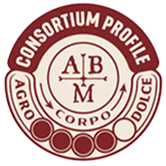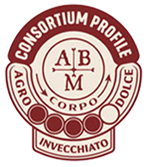
Balsamic Vinegar of Modena PGI
The symbol of Modena with an ancient history
Balsamic Vinegar of Modena PGI represents the cultural and gastronomic heritage of Modena, the Land of Balsamic Vinegar. This product embodies a thousand-year history, interwoven with passion, craftsmanship and dedication to perfection.
Its origins have their roots in ancient traditions: already during Roman times, it was customary to cook grape must in order to preserve it and use it in culinary preparations. However, it was in the Middle Ages that such a ‘very perfect vinegar’ first appeared. In 1747, the term ‘Aceto Balsamico’ appeared in the cellar records of the Este dukes, lords of Modena, while in 1830, Count Giorgio Gallesio of Modena described the different types of Balsamic vinegar produced in Modena.
Today, Balsamic Vinegar of Modena is renowned and appreciated all over the world, firmly maintaining its historical and cultural identity anchored to the territory. This link with Modena has been officially recognised by the European Union, which has registered Balsamic Vinegar of Modena in the list of Protected Geographical Indication (PGI) products.
The basic raw material for its production is grape must which is cooked or concentrated, and skilfully blended with wine vinegar, in line with production specifications and recipes handed down through the ages. The cooked must lends sweetness, complexity and structure to the finished product, while the wine vinegar adds aromatic notes and freshness, creating the typical sweet-and-sour taste that characterises Balsamic Vinegar of Modena. The periods of refinement and ageing, in vats and wooden barrels, together with the recipes jealously guarded by the producers, make it possible to obtain a wide variety of products, satisfying both top chefs and those who use it daily as their favourite condiment.
Balsamic Vinegar of Modena and its organoleptic characteristics
Balsamic Vinegar of Modena (BVM) is produced in a wide range of types with differing sensory and analytical characteristics. In fact, under the same designation we find products with different tastes, aromas, textures and densities: from the more ‘sour’ and decisive to the sweet and soft, from the light and flowing to the rich and creamy.
Faced with this wide choice, it is not always easy to pinpoint the product we prefer, i.e. the one that corresponds to our own personal taste and the ways we intend to use it. This is why the Consortium for the Protection of Balsamic Vinegar of Modena has created the Consortium Profile, a collective mark which, based on a five-level segmentation of the vast range of available products, contains the organoleptic indications necessary for the consumer to identify his or her favourite product.
The first five levels identified for Balsamic Vinegar of Modena PGI, are joined by two more for the ‘aged’ product, making a total of seven levels.
Passing from a product with one seal to a product with five seals, the characteristics change from a tactile, olfactory and gustatory point of view: from a light-bodied, sharp and pungent product, in which acidity and freshness prevail and the olfactory spectrum is limited to acetic and citrus scents, to products with a full, rounded body and a strong structure that is velvety and creamy to the touch, soft, sweet and intense on the palate, and presents a complexity enriched by hints of sweet spices, roasting, dark fruit jam, dried fruit and sandalwood to the nose.







